MSI Prestige 16 AI Evo review: Power and longevity show its versatility
Versatility is what this MSI laptop brings to the party

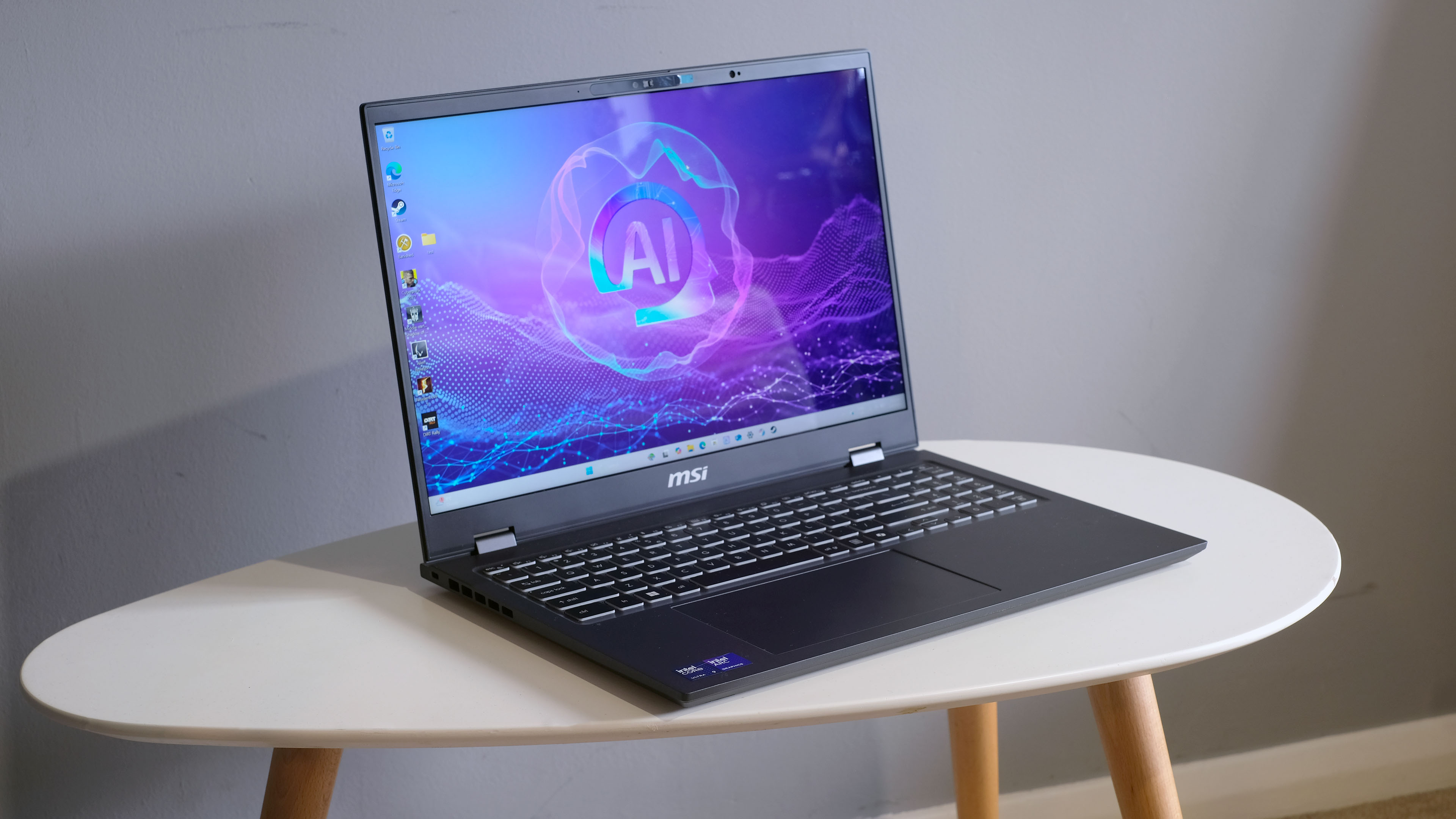
A trinity of portability, power and long battery life makes the MSI Prestige 16 AI Evo a much more compelling laptop than it may appear at first glance. You miss out on a few glossy extras like a show-off screen and great speakers, but at the right price this would be a smart buy.
-
+
Light considering its size, power and battery
-
+
Strong CPU and graphics performance
-
+
Long battery life
-
-
Slightly vague keyboard
-
-
Awkward touchpad placement
-
-
Display lacks high-end techy chops
Why you can trust T3

The MSI Prestige 16 AI Evo is not in the running for the most interesting laptop of 2025. But it is notable as one of the first ever models to ship with Intel's Ultra 9 285H processor. And it makes big-screen productivity-performance PCs like this way more appealing for portable use.
The bottom line: it's not often you meet a laptop like this that can last almost 16 hours between charges. And that counts for a lot, particularly when the MSI Prestige 16 AI Evo can disappear into a normal rucksack happily thanks to its low weight and thickness.
Price & Availability
The MSI Prestige 16 AI Evo was announced in January 2025, as the sequel to a laptop that came out the year before.
At the time of review you’re much more likely to find the previous generation versions on sale, with the Ultra 9 185H processor instead of the Ultra 9 285H CPU reviewed here.
This new version gets you much better CPU performance and power efficiency, so make sure you don’t buy the wrong model.
Design
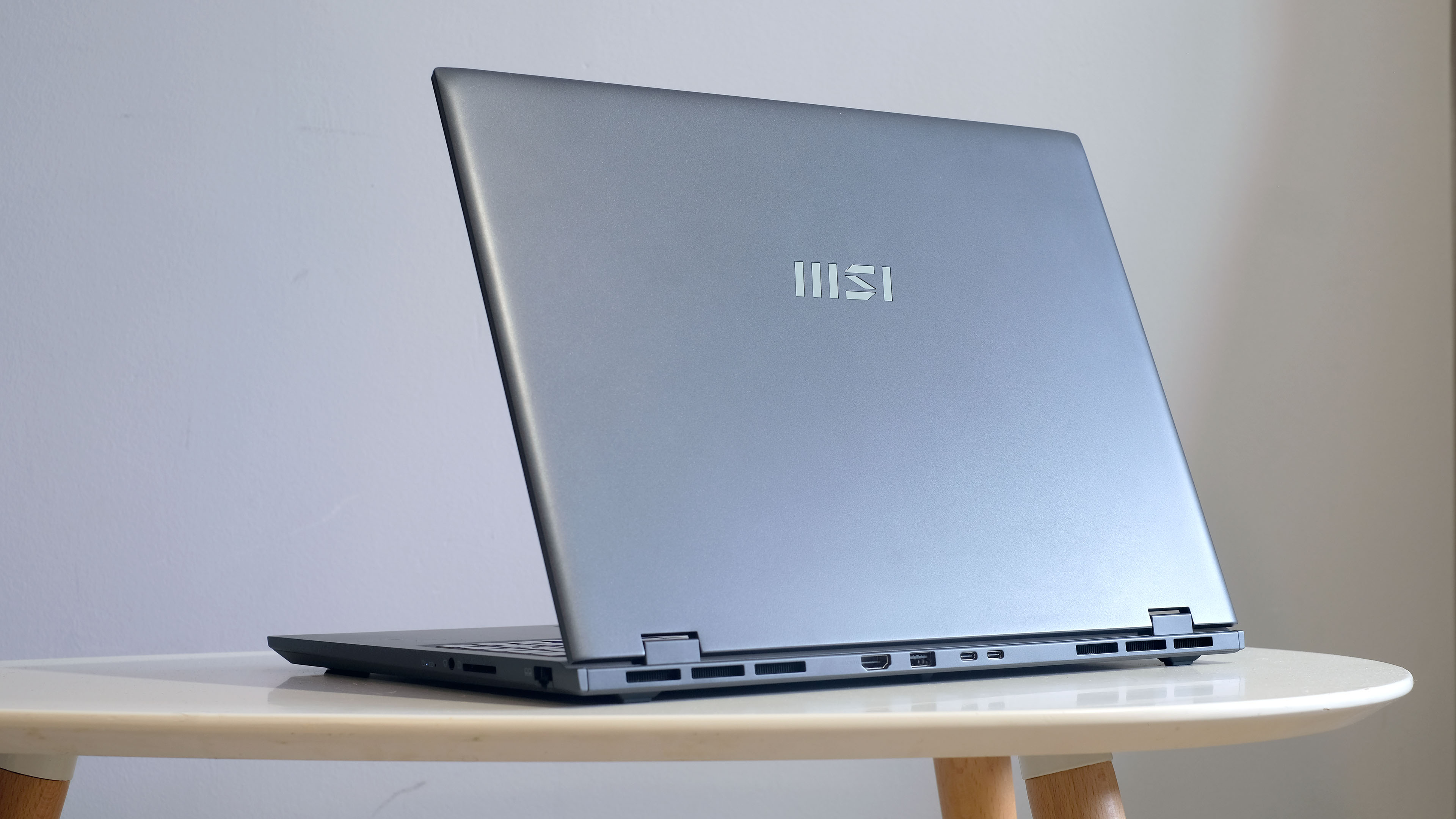
Prestige is MSI's higher-end business and productivity laptop family. You get a mostly sober appearance, with just a few hints of something flashier.
For example, the keyboard keys have translucent sidewalls, letting the slightly purple-tinted backlight shine through. But the casing is otherwise all dark/dark grey and made for practicality rather than to draw attention.
Get all the latest news, reviews, deals and buying guides on gorgeous tech, home and active products from the T3 experts
There's an unusual collision of ideas going on here, though. The MSI Prestige 16 AI Evo is laid out like an at-home desktop-replacer, with almost all its connections laid out along the back. This makes for easier cable management, and suggests a PC is intended to be kept in one place much of the time.
Then again, the MSI Prestige 16 AI Evo is also highly thin and light. This model weighs 1.5kg and is 19mm thick. It feels entirely at home as a portable use PC, as long as your rucksack is big enough to fit a laptop of this footprint.
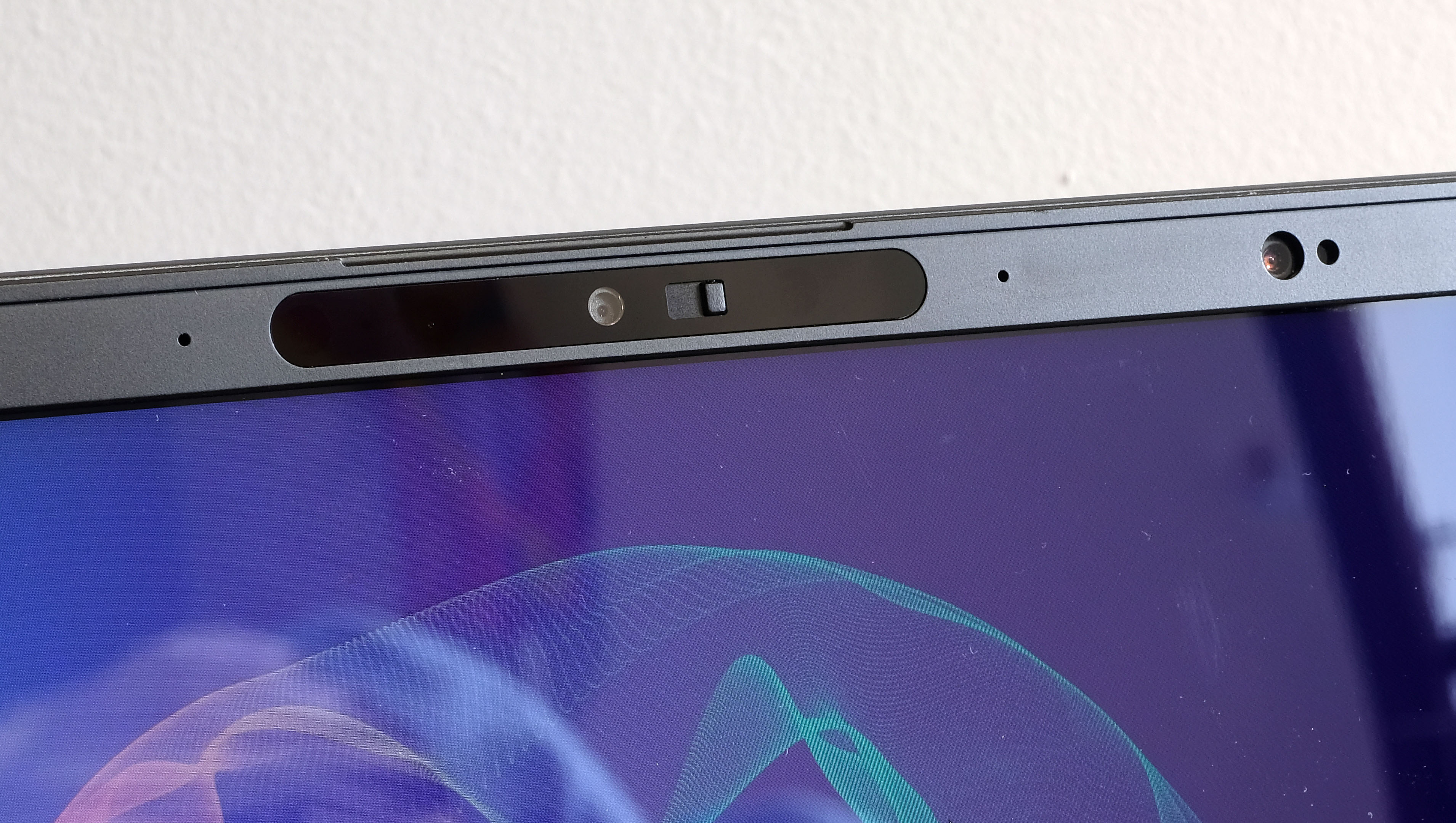
The MSI Prestige 16 AI Evo has a magnesium alloy and part-plastic casing in order to keep the weight down. And while it feels far less metallic than the aluminium of the aluminium AMD MSI Prestige I also have in for testing, it's far lighter.
This leads to a pretty practical combo PC that can act as both a travel companion and the only PC in your house.
Along the back, we get a full-size HDMI for connection to a monitor or TV, two Thunderbolt connectors and one old-school USB-A. These are joined, on the right side, by the SD slot and Ethernet connector. These are conclusive proof that the MSI Prestige 16 AI Evo is really a nerdy work laptop, even if a laptop of this class could really do with an extra USB connector or two.
Display
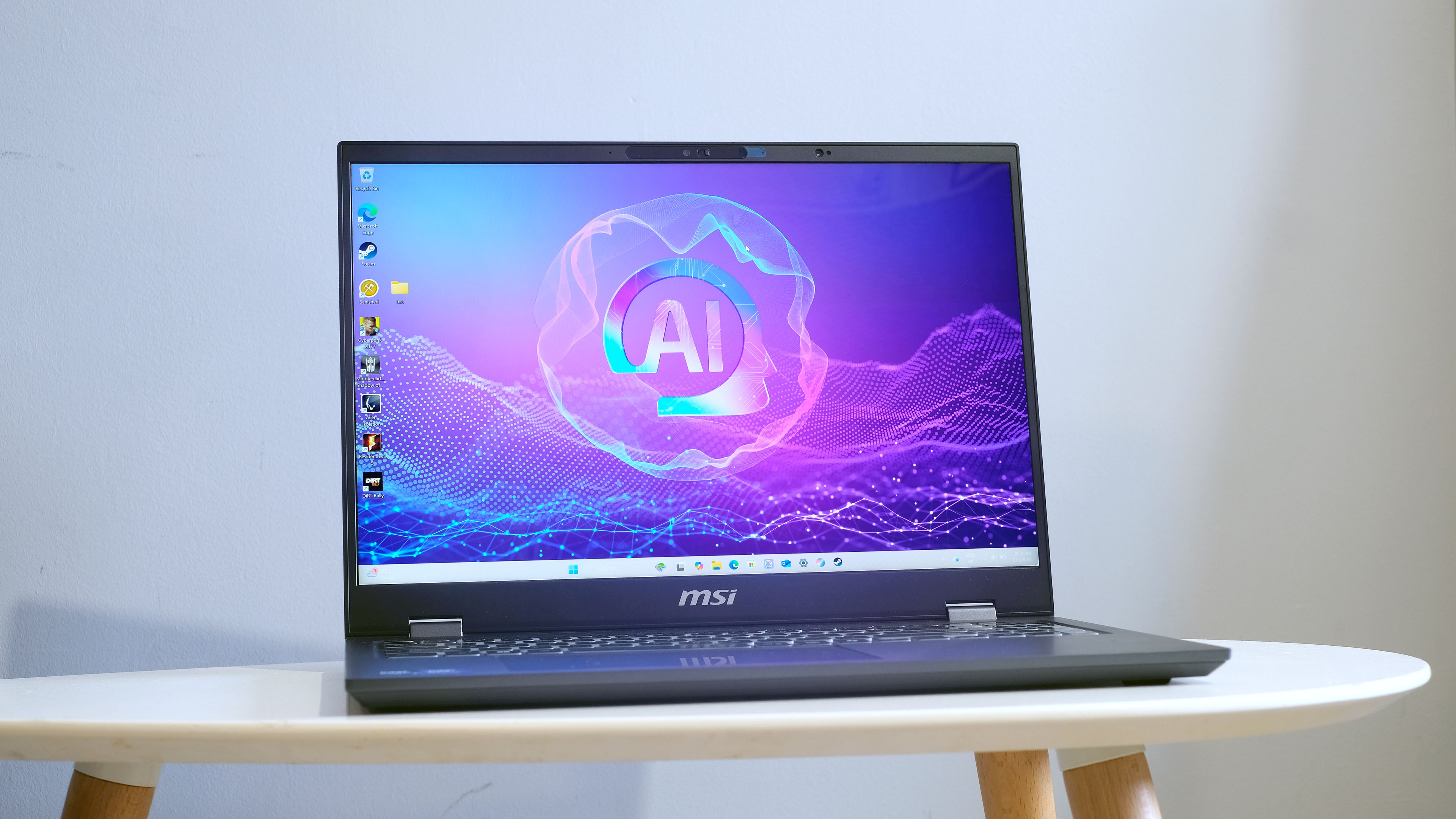
The MSI Prestige 16 AI Evo has a 16-inch 1600p screen, and once again it sort of blends the worlds of a portable style laptop and a more no-nonsense productivity one.
For example, the panel itself is solid but not top-tier stuff by 2025 standards. And this largely comes down to the core tech used: LCD. Now that OLED laptops are more common, this is the de facto choice for better black levels and contrast.
That said, the MSI's contrast is very good for an IPS LCD panel, colour is deep, and maximum brightness is solid – basically matching the OLED crowd.
We miss out on the high-end extras. Maximum refresh rate is 60Hz, not the 120Hz and beyond common these days. The screen doesn't support high dynamic range (HDR), and while the screen is glossy, it's a non-touch surface and a plastic one with a slightly raised screen border. For maxed-out class, you want edge-to-edge glass.
Plastic is the right choice for a weight-conscious laptop like this, though, and MSI has executed the finish well. There's no significant distortion or reflections, which can be quite distracting (and is quite common) in these glossy plastic laptop screens at times.
Despite being totally touchscreen-absent, the MSI Prestige 16 AI Evo's hinge lets you fold the screen back a full 180 degrees, presumably so you can share presentations and whatnot with an entire meeting room.
Keyboard & Trackpad
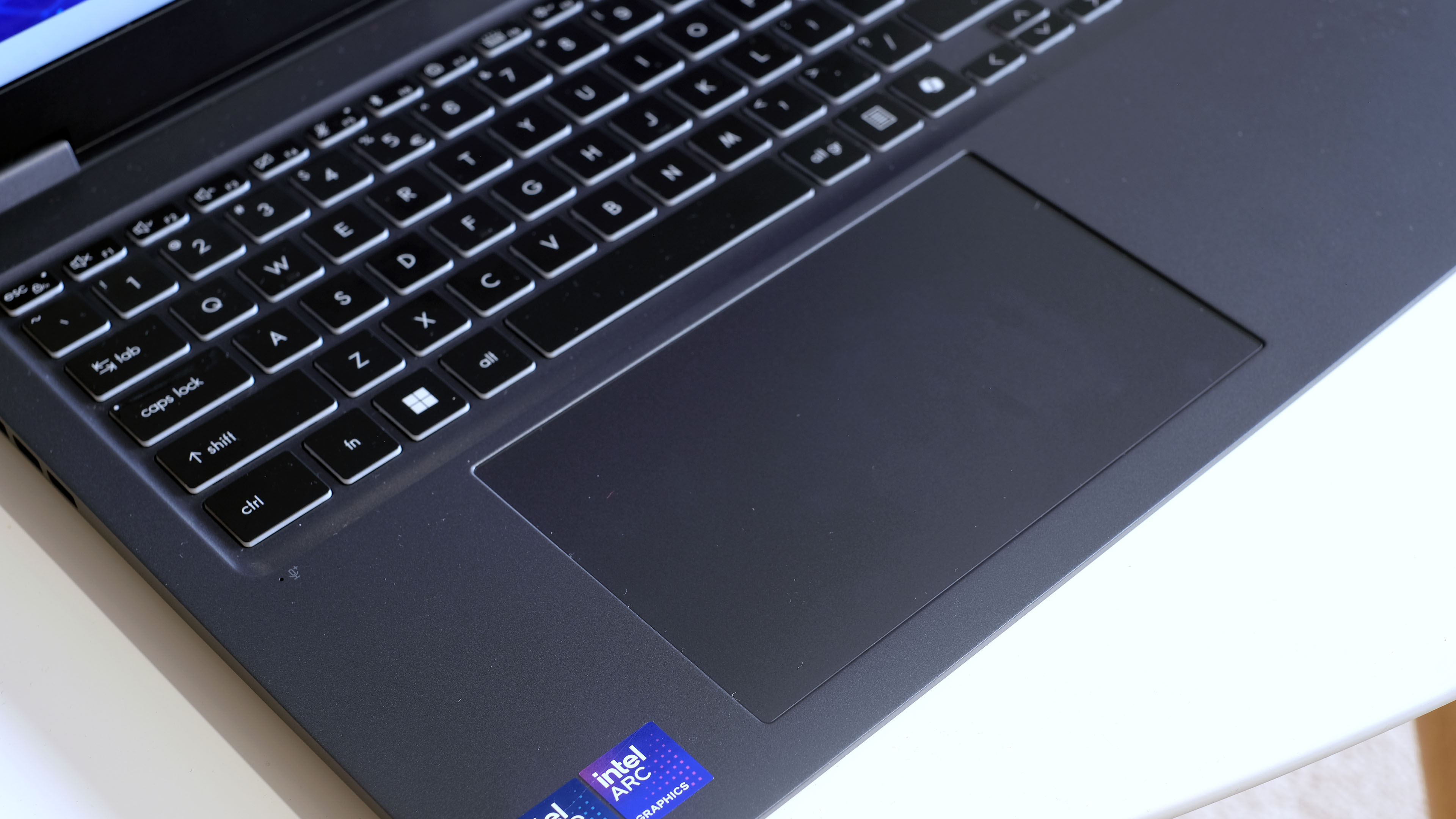
For the first few days, I found working with the MSI Prestige 16 AI Evo a tiny bit frustrating. Like most in this class it has a NUM pad. And thanks to the touchpad design, this shunts the "left click" touchpad zone way over to the left.
It's because the pad itself is nowhere near centrally located. So while it's massive and made of textured glass, both positive points, I do think you need to fiddle with Windows 11's settings to make it feel good to use. My solution is to go full MacBook and disable click zones altogether, using a two-fingers press for right clicks instead.
The touchpad's mechanical clicker is also a little more laboured than I'd like. It manages to combine a bright, somewhat loud clickiness with the weighty feel usually paired with a "darker" feeling clicker.
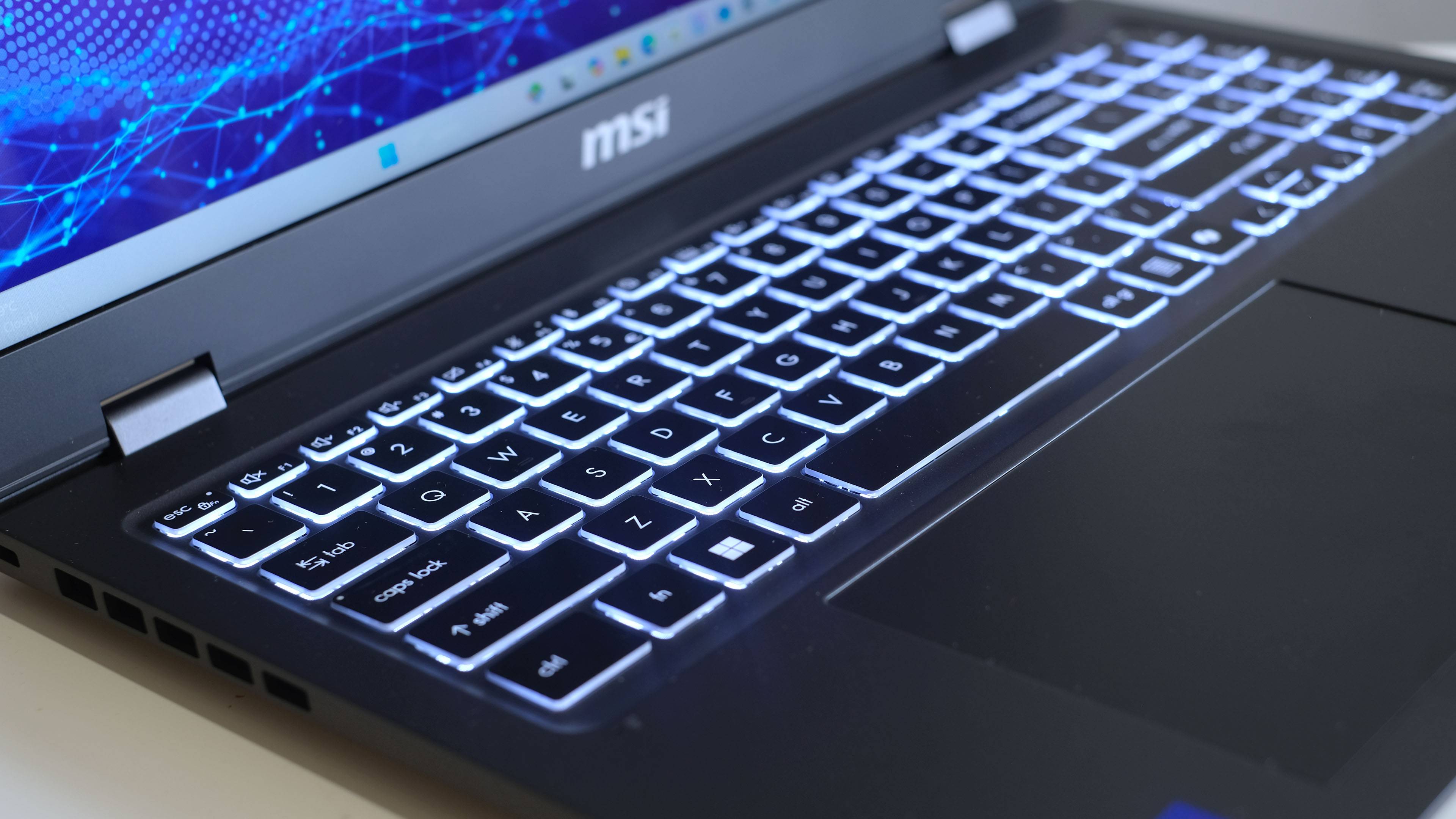
The MSI Prestige 16 AI Evo's keyboard is similarly no more than decent. Key travel is solid, typing is fairly quiet, and there's some resistance to key depression.
There could be more feedback at the actuation point, though, to give you more sense of confidence when typing. These inputs are fine, but nothing special.
And while you might imagine the AMD version of this PC, the Prestige 16 AI, would feel the same, its keyboard keys feel significantly better-defined than these ones.
The laptop is far heavier than chunkier, though, so I’d much rather live with this version of the Prestige 16 for everyday portability use.
Performance
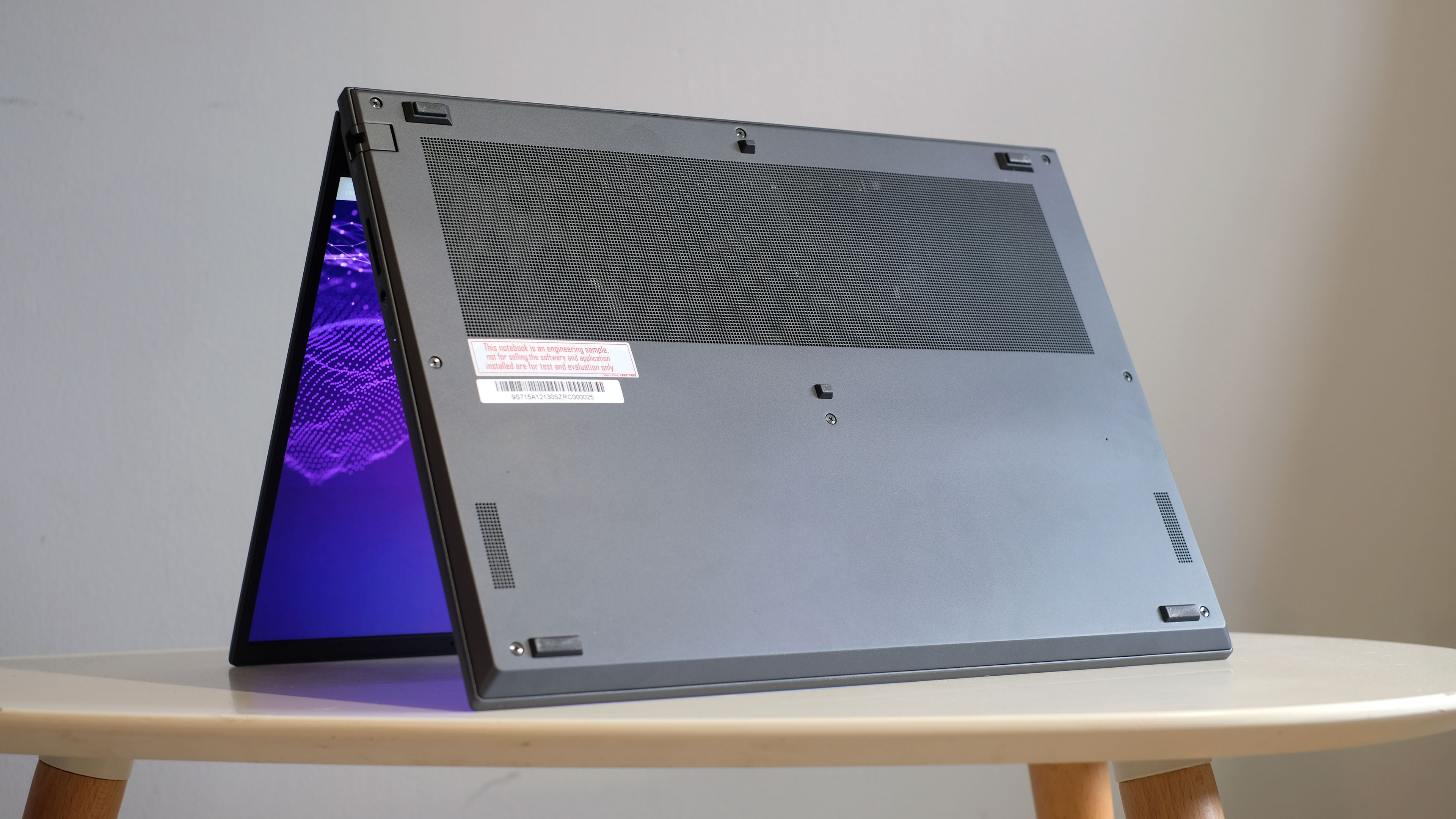
It's inside you find the special stuff. The MSI Prestige 16 AI Evo is among the first laptops I've reviewed with an Intel Core 9 285H chipset, part of Intel's second-generation Ultra series.
Earlier waves were criticised for having kinda disappointing CPU performance. But the MSI Prestige 16 AI Evo brushes that off, not only because it has the top-tier Ultra 9 chipset, but because it's part of the more performance-driven H series.
It's a great demo of the value of these processors that are inspired by how phone chipsets have been made over the years. There's loads of power on tap when you need it, but it can also tick over just fine for daily tasks – while making zero noise and using up very little battery.
Raw performance is fairly similar to that of an M4 MacBook, the CPU power is a lot better than the Ultra 7 chipset we've seen in more style-driven laptops. And there's a button on the keyboard that lets you block the MSI Prestige 16 AI Evo from revving hard enough to make noticeable noise.
There are Auto, Performance, Balanced and Whisper-Quiet modes. While none of these is suddenly going to make the laptop cause a racket, it's more that you can control the noise made when you also ask more of the thing. A fan-hater’s delight.
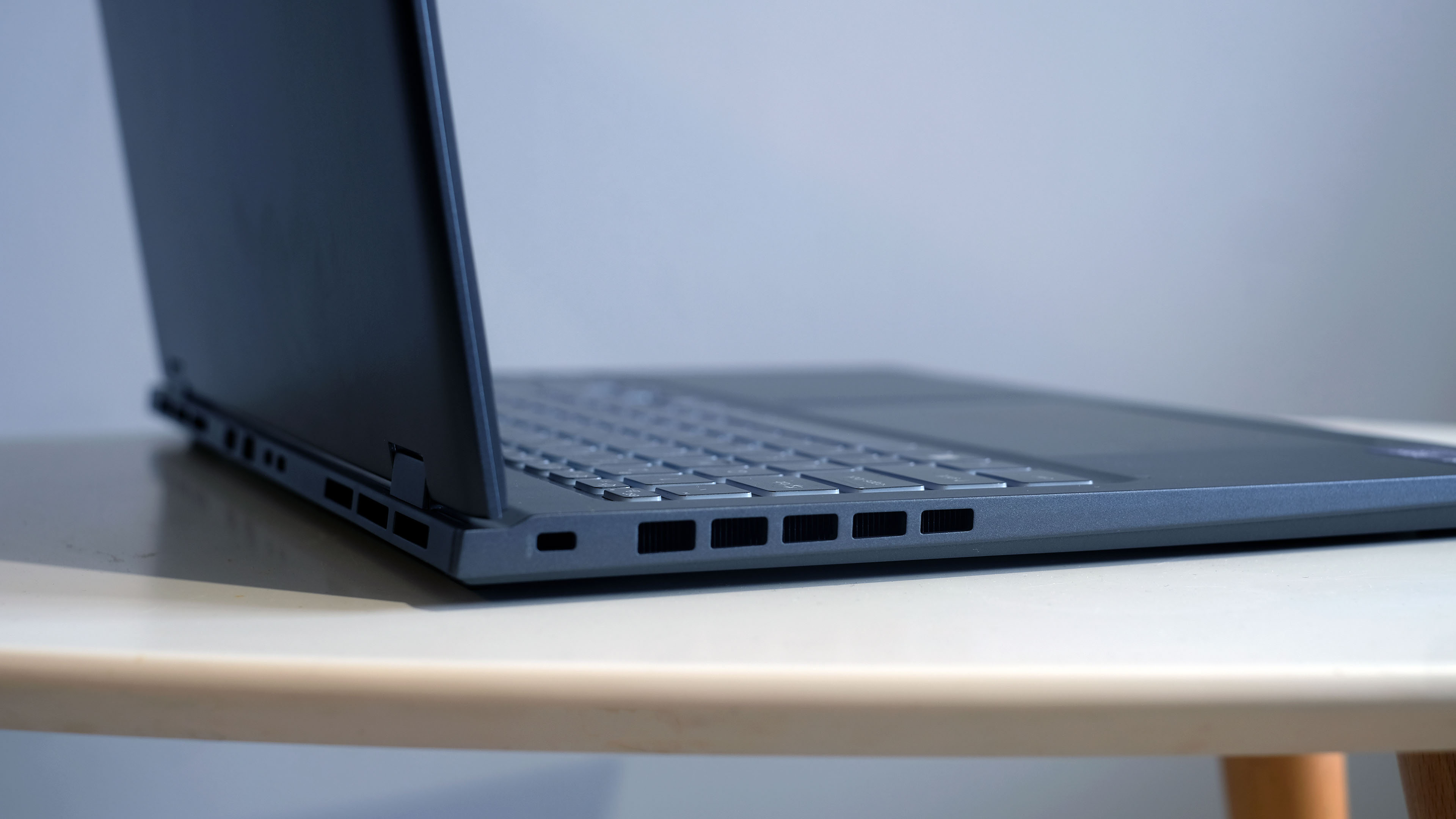
The performance ceiling here is also impressively high for gaming, given this is by no means a gaming PC. Intel's Ultra 9 285H chipset incorporates an Arc 140T graphics chipset. It offers power roughly equivalent to a low-end dedicated card.
No, this doesn't mean you can run recent, demanding games at the screen's native 1600p resolution and max out the settings. But in a world where gaming handhelds are taken into account in PC gaming (which the Prestige 16 can easily best), you sure can play a whole lot.
Cyberpunk 2077 runs miraculously well for non-dedicated gaming hardware. Well, as long as you don't try to switch on ray tracing effects. It helps that the 140T can claim 16GB of video memory from system RAM, which is why the MSI Prestige 16 AI Evo really needs at least 32GB, which is what it has.
Alongside that you get a 1TB SSD. It’s a powerful laptop that can handle just about anything but a serious gaming habit. And the one area that doesn’t really shine – AI performance – is the one part we struggle to get too excited about anyway. You want a powerful NPU (the AI processor) for on-device AI – but the most popular uses of AI still happen in the cloud anyway.
Battery Life
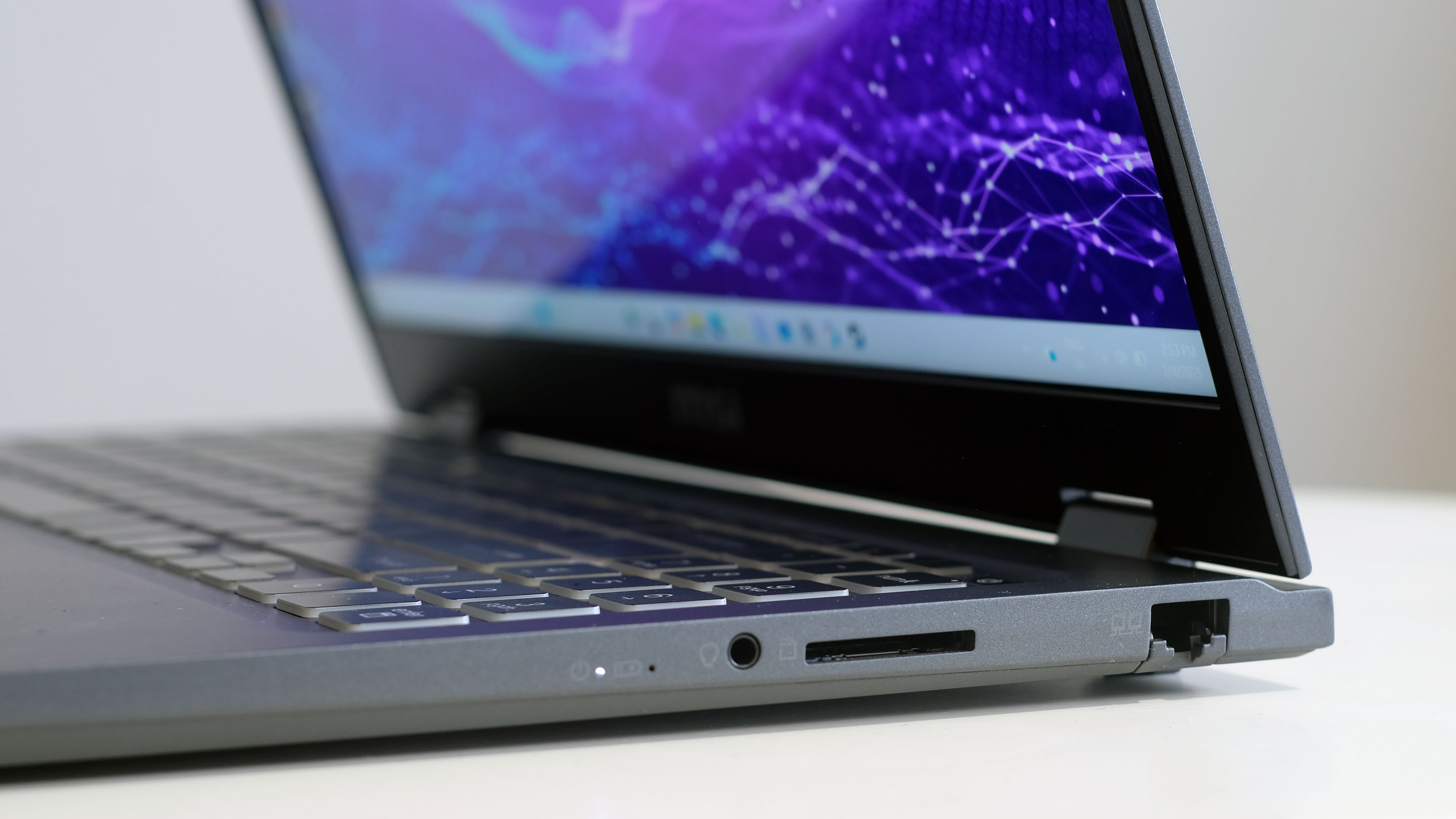
I started this review talking about how the MSI Prestige 16 AI Evo smashes ideas together in quite a striking, if low-key way. Never is that truer than in the battery.
Remember, this thing has a portable-friendly casing, and yet also has a 97.5Wh battery according to the laptop's own battery report (99.9Wh according to the specs). It's as large a battery as you can put in a PC and still be allowed to take it on a plane.
The results are compelling, at least compared to some older-generation laptops with performance chipsets. We found the MSI Prestige 16 AI Evo can last up to 15 hours and 45 minutes with light work. While not a standard-setter among the latest generations of laptops, it’s still impressive.
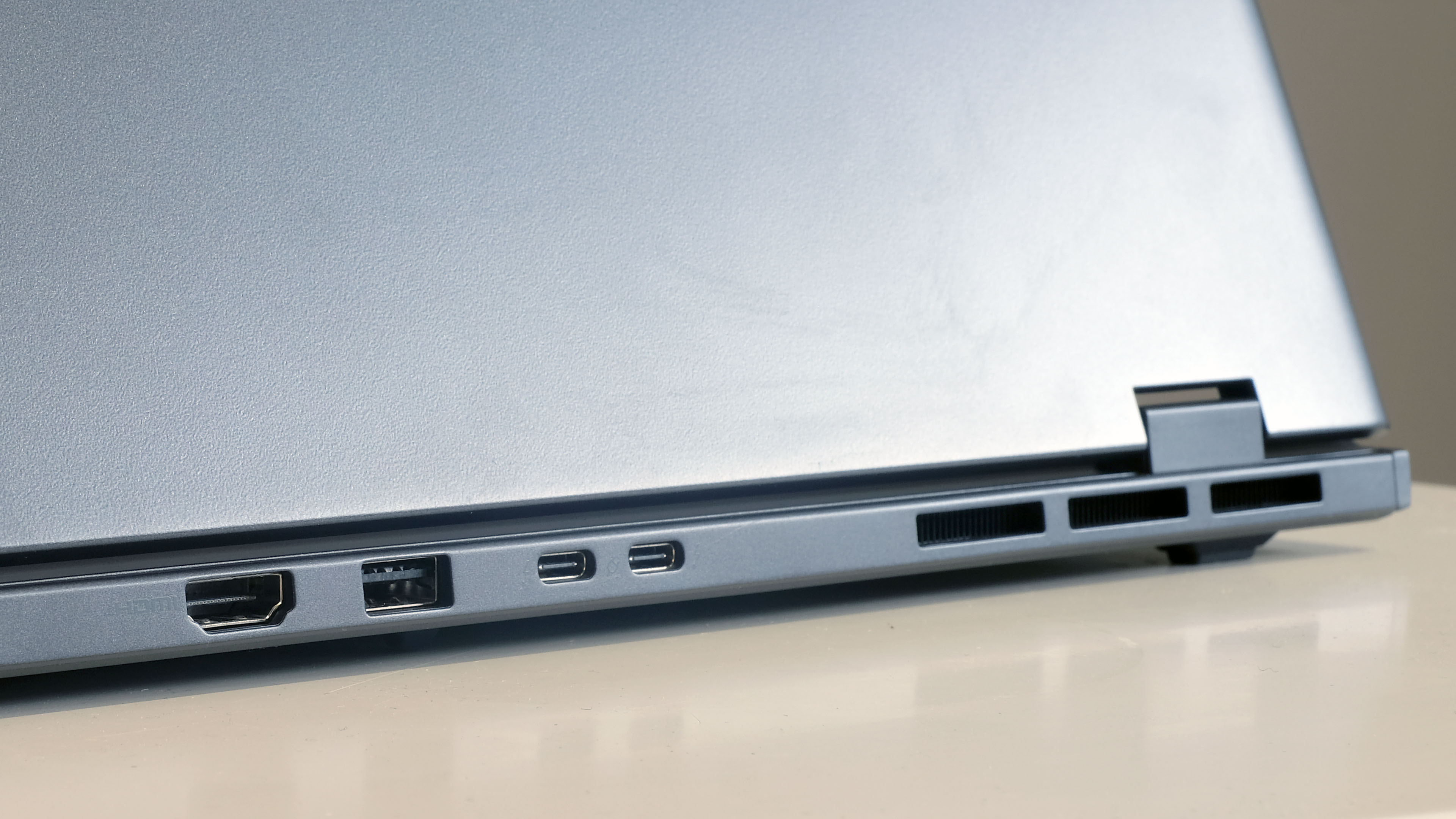
Oddly enough, I couldn’t get it to last nearly as long when streaming video from YouTube. Video-playing longevity seemed to change a bunch between runs, though, from 10 to 14 hours, suggesting we may be a few software or firmware updates away from seeing the MSI Prestige 16 AI Evo last as it should in all conditions. But the promise is clearly there.
Finishing up with a couple of side dish remarks, the MSI Prestige 16 AI Evo speakers and webcam are pretty unremarkable. There’s the tiniest whiff of bass to the speakers, which is welcome, but volume, power and sound width are nothing to get excited about. Similarly, the 1080p webcam does the job, but the image does tend to veer towards the noisy or blobbily vague more readily than the best.
Verdict
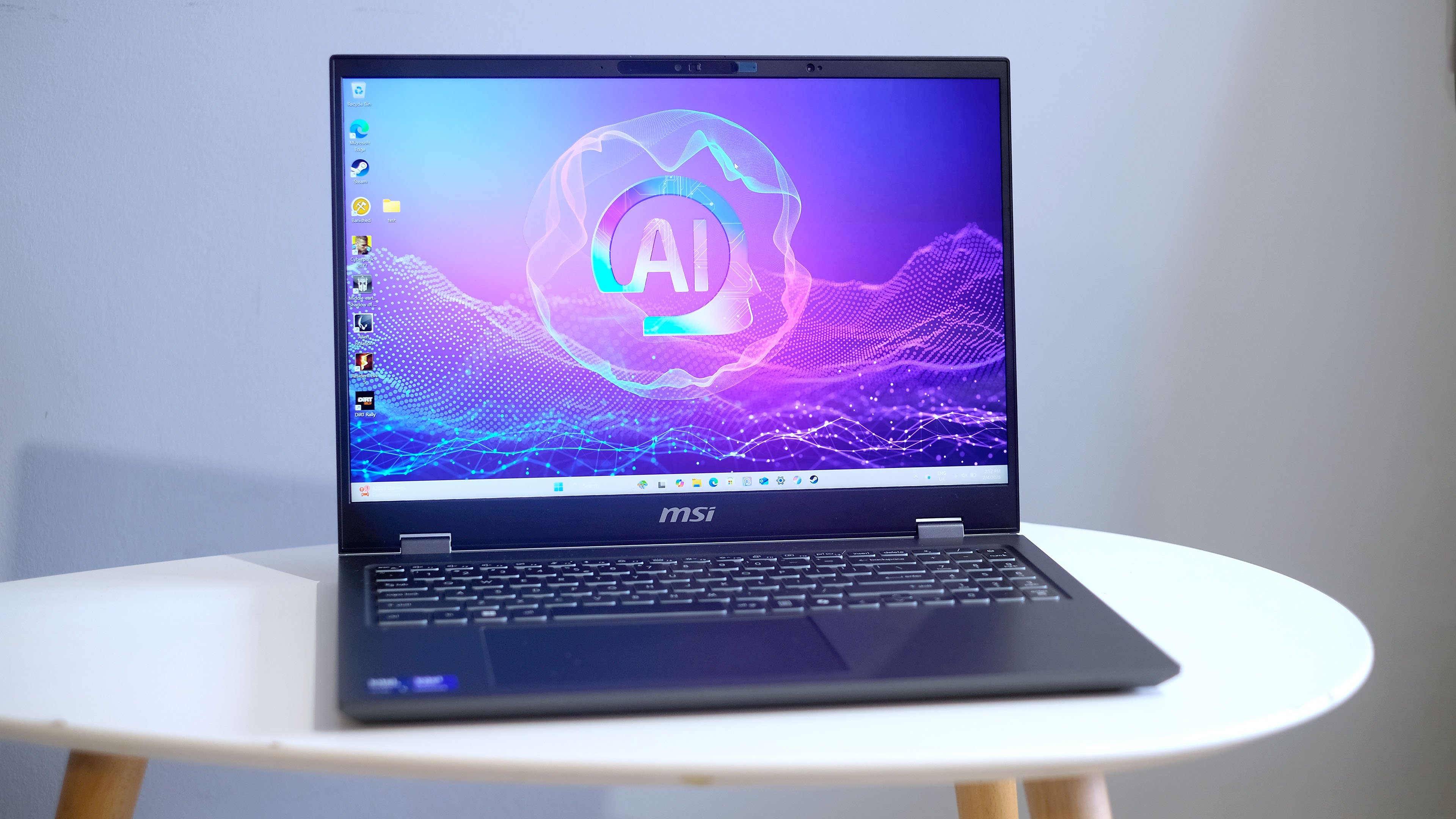
The MSI Prestige 16 AI Evo shows what new processor tech can do for the desktop-replacer PC.
It results in a laptop with enough power for just about anything, as long as you don't need super-powerful graphics hardware. And even with what's on review here, you can comfortably play games like Cyberpunk 2077 and Kingdom Come: Deliverance without nearly having to make do with barebones graphics.
And despite all that power, the MSI Prestige 16 AI Evo still lasts ages between charges, helped by having a gigantic battery.
Sure, the MSI Prestige 16 AI Evo isn't the most exciting laptop to look at. And some others have slightly better-feeling touchpads and keyboards. But if power matters, and longevity is key, then this laptop manages to wed it to surprising versatility.
Also consider
If you want to go even further down the well of laptops with unnervingly low weight matched with good performance, check out the LG Gram 16. At the time of writing, it’s only available with a last-generation Intel Ultra processor, though, so make sure the price is right.
Similarly, it’s not yet clear what laptops will use the Ultra 9 285H processor at the time of review, as MSI got in so early. You may also want to consider the AMD version of this laptop, particularly if you are interested in at-home use more than dragging your laptop around town. It’s heavier and has a lower capacity battery, but its casing also feels much more metallic, and we prefer the keyboard too.

Andrew is a freelance tech and entertainment journalist. He writes for T3, Wired, Forbes, The Guardian, The Standard, TrustedReviews and Shortlist, among others.
Laptop and computing content is his specialism at T3, but he also regularly covers fitness tech, audio and mobile devices.
He began writing about tech full time in 2008, back when the Nintendo Wii was riding high and smartphones were still new.
You must confirm your public display name before commenting
Please logout and then login again, you will then be prompted to enter your display name.